Management of Digital Systems
VerifiedAdded on 2023/01/19
|10
|2208
|26
AI Summary
This study explores the management of digital systems, including software development life cycle and types of information systems used in universities. It discusses the strategic, tactical, and operational levels of data management. The study also covers the hardware and software used in the development process.
Contribute Materials
Your contribution can guide someone’s learning journey. Share your
documents today.
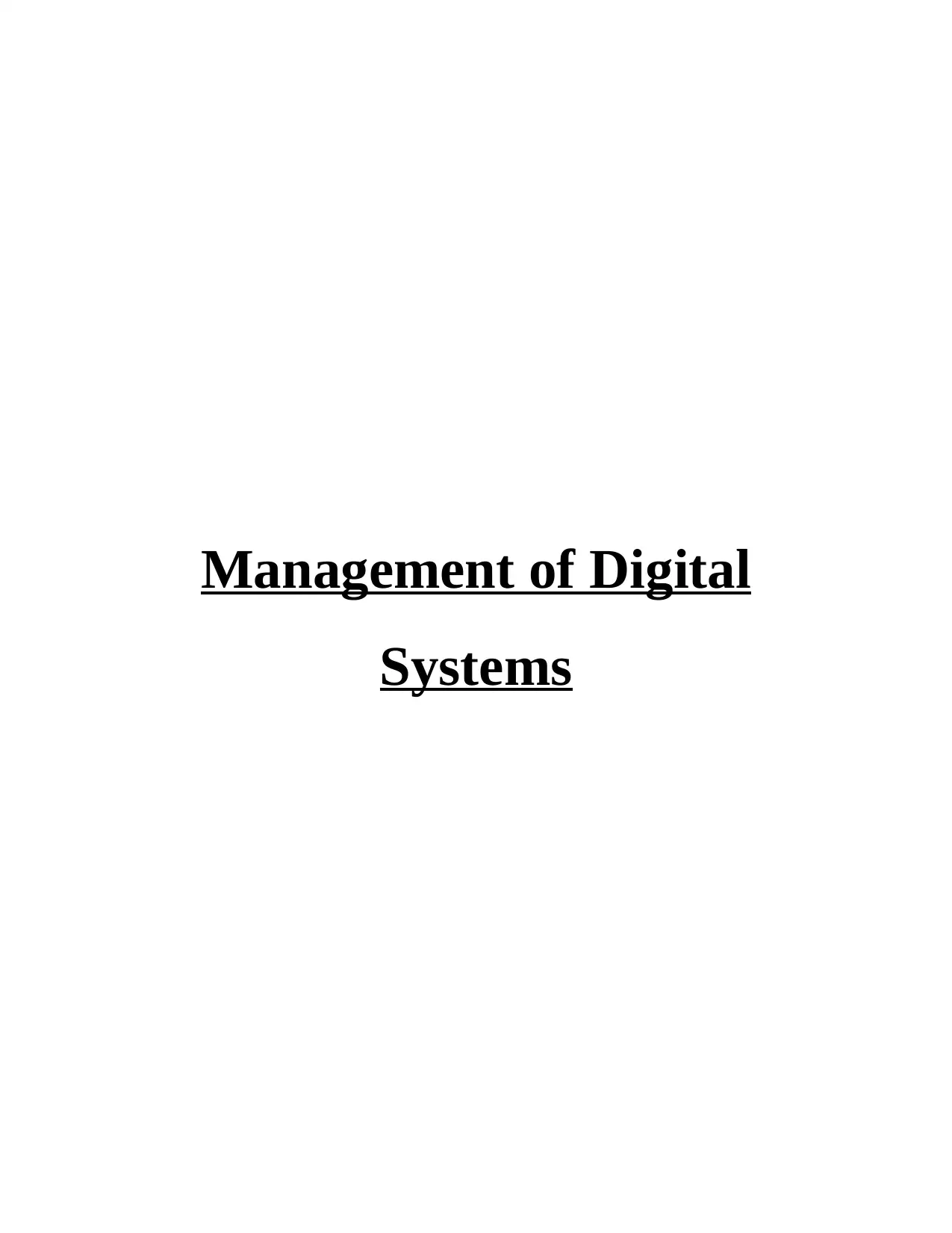
Management of Digital
Systems
Systems
Secure Best Marks with AI Grader
Need help grading? Try our AI Grader for instant feedback on your assignments.
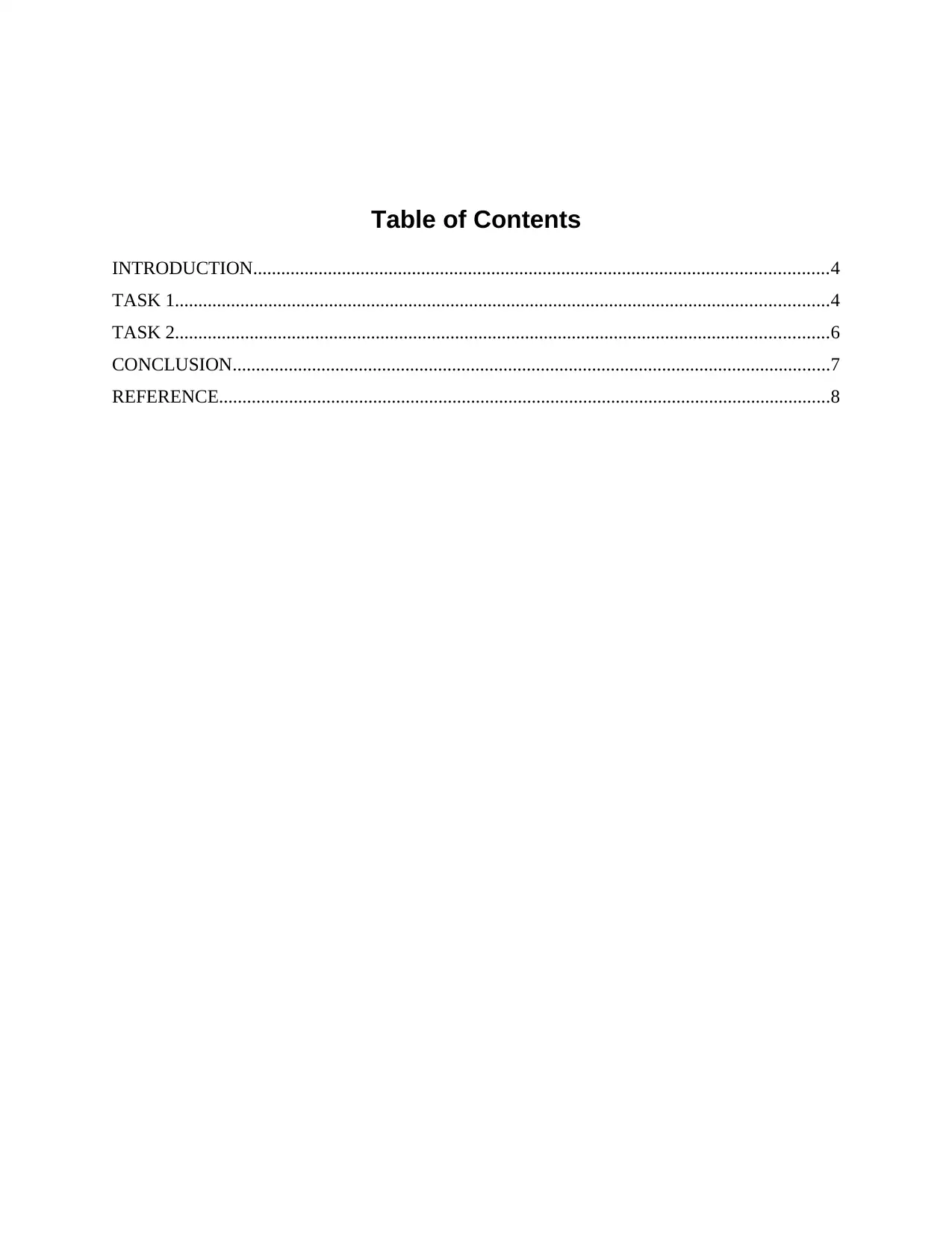
Table of Contents
INTRODUCTION...........................................................................................................................4
TASK 1............................................................................................................................................4
TASK 2............................................................................................................................................6
CONCLUSION................................................................................................................................7
REFERENCE...................................................................................................................................8
INTRODUCTION...........................................................................................................................4
TASK 1............................................................................................................................................4
TASK 2............................................................................................................................................6
CONCLUSION................................................................................................................................7
REFERENCE...................................................................................................................................8
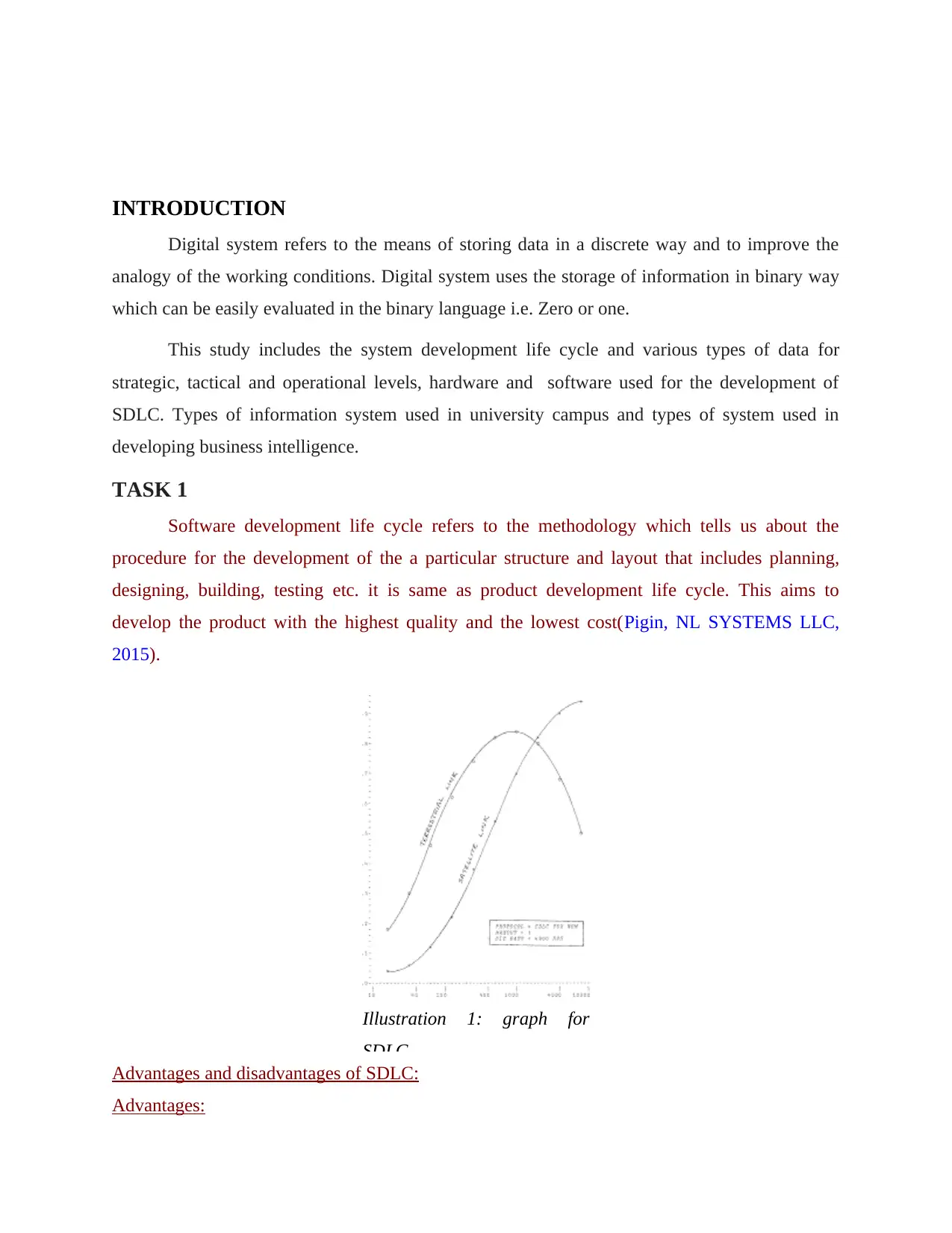
INTRODUCTION
Digital system refers to the means of storing data in a discrete way and to improve the
analogy of the working conditions. Digital system uses the storage of information in binary way
which can be easily evaluated in the binary language i.e. Zero or one.
This study includes the system development life cycle and various types of data for
strategic, tactical and operational levels, hardware and software used for the development of
SDLC. Types of information system used in university campus and types of system used in
developing business intelligence.
TASK 1
Software development life cycle refers to the methodology which tells us about the
procedure for the development of the a particular structure and layout that includes planning,
designing, building, testing etc. it is same as product development life cycle. This aims to
develop the product with the highest quality and the lowest cost(Pigin, NL SYSTEMS LLC,
2015).
Advantages and disadvantages of SDLC:
Advantages:
Illustration 1: graph for
SDLC
Digital system refers to the means of storing data in a discrete way and to improve the
analogy of the working conditions. Digital system uses the storage of information in binary way
which can be easily evaluated in the binary language i.e. Zero or one.
This study includes the system development life cycle and various types of data for
strategic, tactical and operational levels, hardware and software used for the development of
SDLC. Types of information system used in university campus and types of system used in
developing business intelligence.
TASK 1
Software development life cycle refers to the methodology which tells us about the
procedure for the development of the a particular structure and layout that includes planning,
designing, building, testing etc. it is same as product development life cycle. This aims to
develop the product with the highest quality and the lowest cost(Pigin, NL SYSTEMS LLC,
2015).
Advantages and disadvantages of SDLC:
Advantages:
Illustration 1: graph for
SDLC
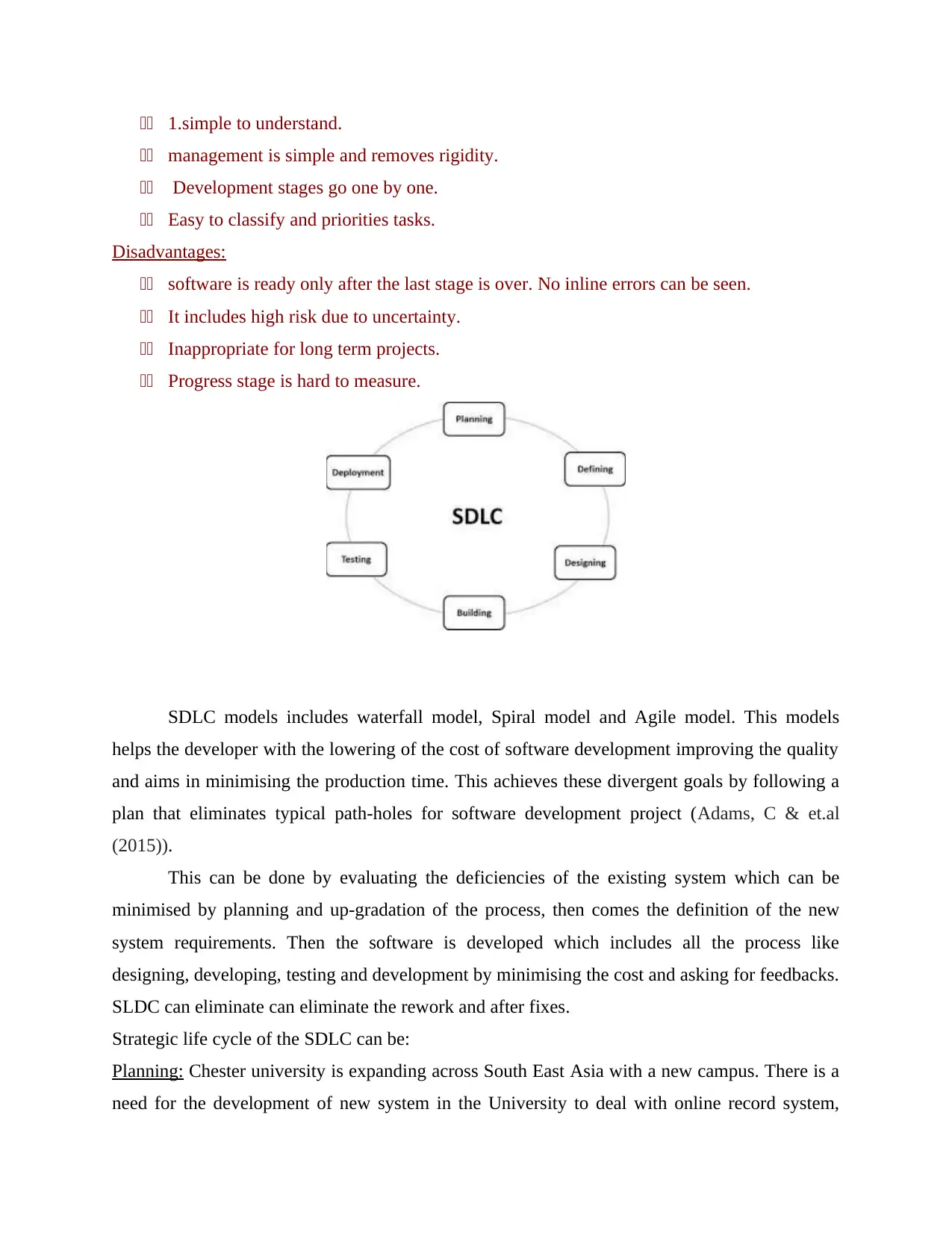
11 1.simple to understand.
11 management is simple and removes rigidity.
11 Development stages go one by one.
11 Easy to classify and priorities tasks.
Disadvantages:
11 software is ready only after the last stage is over. No inline errors can be seen.
11 It includes high risk due to uncertainty.
11 Inappropriate for long term projects.
11 Progress stage is hard to measure.
SDLC models includes waterfall model, Spiral model and Agile model. This models
helps the developer with the lowering of the cost of software development improving the quality
and aims in minimising the production time. This achieves these divergent goals by following a
plan that eliminates typical path-holes for software development project (Adams, C & et.al
(2015)).
This can be done by evaluating the deficiencies of the existing system which can be
minimised by planning and up-gradation of the process, then comes the definition of the new
system requirements. Then the software is developed which includes all the process like
designing, developing, testing and development by minimising the cost and asking for feedbacks.
SLDC can eliminate can eliminate the rework and after fixes.
Strategic life cycle of the SDLC can be:
Planning: Chester university is expanding across South East Asia with a new campus. There is a
need for the development of new system in the University to deal with online record system,
11 management is simple and removes rigidity.
11 Development stages go one by one.
11 Easy to classify and priorities tasks.
Disadvantages:
11 software is ready only after the last stage is over. No inline errors can be seen.
11 It includes high risk due to uncertainty.
11 Inappropriate for long term projects.
11 Progress stage is hard to measure.
SDLC models includes waterfall model, Spiral model and Agile model. This models
helps the developer with the lowering of the cost of software development improving the quality
and aims in minimising the production time. This achieves these divergent goals by following a
plan that eliminates typical path-holes for software development project (Adams, C & et.al
(2015)).
This can be done by evaluating the deficiencies of the existing system which can be
minimised by planning and up-gradation of the process, then comes the definition of the new
system requirements. Then the software is developed which includes all the process like
designing, developing, testing and development by minimising the cost and asking for feedbacks.
SLDC can eliminate can eliminate the rework and after fixes.
Strategic life cycle of the SDLC can be:
Planning: Chester university is expanding across South East Asia with a new campus. There is a
need for the development of new system in the University to deal with online record system,
Secure Best Marks with AI Grader
Need help grading? Try our AI Grader for instant feedback on your assignments.
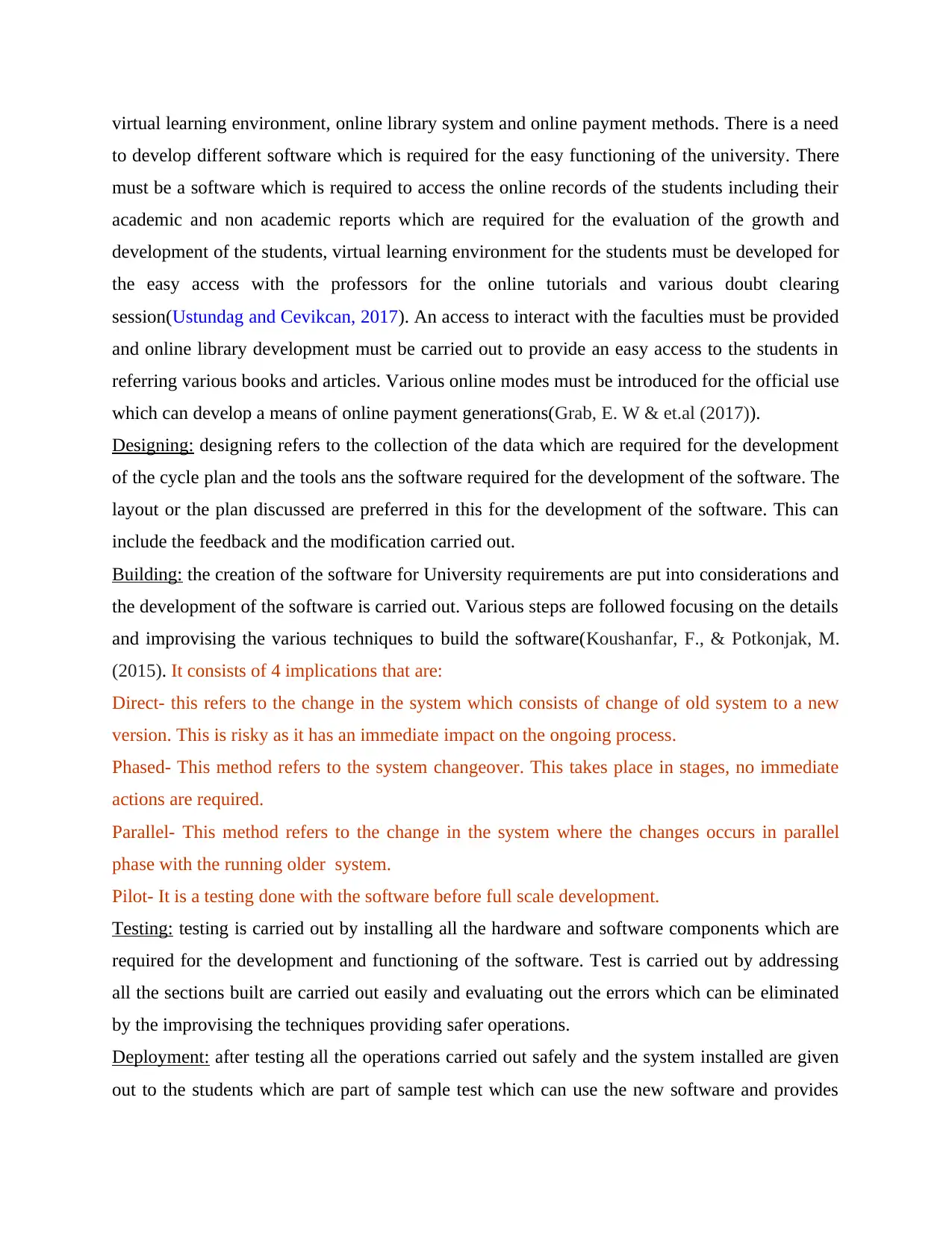
virtual learning environment, online library system and online payment methods. There is a need
to develop different software which is required for the easy functioning of the university. There
must be a software which is required to access the online records of the students including their
academic and non academic reports which are required for the evaluation of the growth and
development of the students, virtual learning environment for the students must be developed for
the easy access with the professors for the online tutorials and various doubt clearing
session(Ustundag and Cevikcan, 2017). An access to interact with the faculties must be provided
and online library development must be carried out to provide an easy access to the students in
referring various books and articles. Various online modes must be introduced for the official use
which can develop a means of online payment generations(Grab, E. W & et.al (2017)).
Designing: designing refers to the collection of the data which are required for the development
of the cycle plan and the tools ans the software required for the development of the software. The
layout or the plan discussed are preferred in this for the development of the software. This can
include the feedback and the modification carried out.
Building: the creation of the software for University requirements are put into considerations and
the development of the software is carried out. Various steps are followed focusing on the details
and improvising the various techniques to build the software(Koushanfar, F., & Potkonjak, M.
(2015). It consists of 4 implications that are:
Direct- this refers to the change in the system which consists of change of old system to a new
version. This is risky as it has an immediate impact on the ongoing process.
Phased- This method refers to the system changeover. This takes place in stages, no immediate
actions are required.
Parallel- This method refers to the change in the system where the changes occurs in parallel
phase with the running older system.
Pilot- It is a testing done with the software before full scale development.
Testing: testing is carried out by installing all the hardware and software components which are
required for the development and functioning of the software. Test is carried out by addressing
all the sections built are carried out easily and evaluating out the errors which can be eliminated
by the improvising the techniques providing safer operations.
Deployment: after testing all the operations carried out safely and the system installed are given
out to the students which are part of sample test which can use the new software and provides
to develop different software which is required for the easy functioning of the university. There
must be a software which is required to access the online records of the students including their
academic and non academic reports which are required for the evaluation of the growth and
development of the students, virtual learning environment for the students must be developed for
the easy access with the professors for the online tutorials and various doubt clearing
session(Ustundag and Cevikcan, 2017). An access to interact with the faculties must be provided
and online library development must be carried out to provide an easy access to the students in
referring various books and articles. Various online modes must be introduced for the official use
which can develop a means of online payment generations(Grab, E. W & et.al (2017)).
Designing: designing refers to the collection of the data which are required for the development
of the cycle plan and the tools ans the software required for the development of the software. The
layout or the plan discussed are preferred in this for the development of the software. This can
include the feedback and the modification carried out.
Building: the creation of the software for University requirements are put into considerations and
the development of the software is carried out. Various steps are followed focusing on the details
and improvising the various techniques to build the software(Koushanfar, F., & Potkonjak, M.
(2015). It consists of 4 implications that are:
Direct- this refers to the change in the system which consists of change of old system to a new
version. This is risky as it has an immediate impact on the ongoing process.
Phased- This method refers to the system changeover. This takes place in stages, no immediate
actions are required.
Parallel- This method refers to the change in the system where the changes occurs in parallel
phase with the running older system.
Pilot- It is a testing done with the software before full scale development.
Testing: testing is carried out by installing all the hardware and software components which are
required for the development and functioning of the software. Test is carried out by addressing
all the sections built are carried out easily and evaluating out the errors which can be eliminated
by the improvising the techniques providing safer operations.
Deployment: after testing all the operations carried out safely and the system installed are given
out to the students which are part of sample test which can use the new software and provides
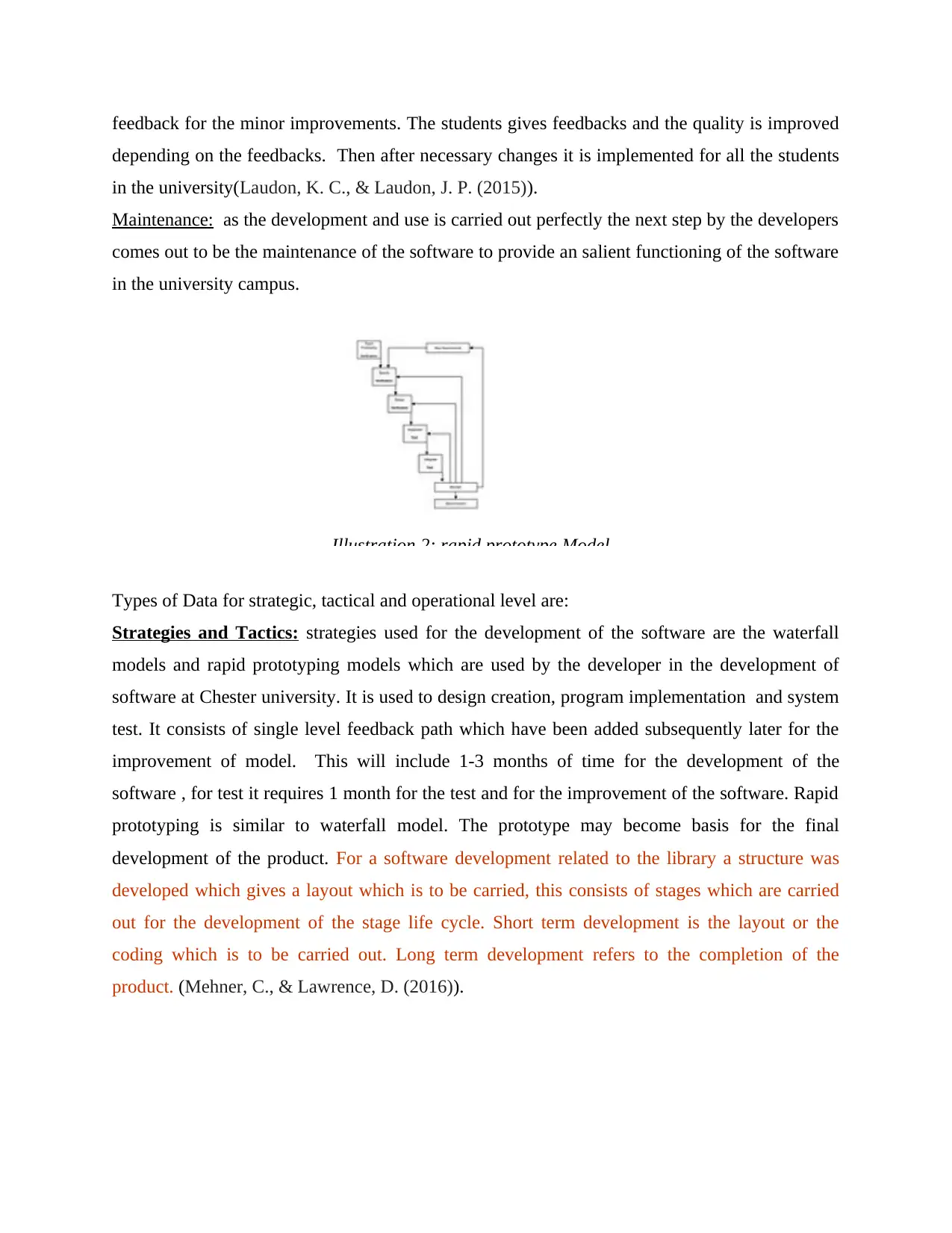
feedback for the minor improvements. The students gives feedbacks and the quality is improved
depending on the feedbacks. Then after necessary changes it is implemented for all the students
in the university(Laudon, K. C., & Laudon, J. P. (2015)).
Maintenance: as the development and use is carried out perfectly the next step by the developers
comes out to be the maintenance of the software to provide an salient functioning of the software
in the university campus.
Types of Data for strategic, tactical and operational level are:
Strategies and Tactics: strategies used for the development of the software are the waterfall
models and rapid prototyping models which are used by the developer in the development of
software at Chester university. It is used to design creation, program implementation and system
test. It consists of single level feedback path which have been added subsequently later for the
improvement of model. This will include 1-3 months of time for the development of the
software , for test it requires 1 month for the test and for the improvement of the software. Rapid
prototyping is similar to waterfall model. The prototype may become basis for the final
development of the product. For a software development related to the library a structure was
developed which gives a layout which is to be carried, this consists of stages which are carried
out for the development of the stage life cycle. Short term development is the layout or the
coding which is to be carried out. Long term development refers to the completion of the
product. (Mehner, C., & Lawrence, D. (2016)).
Illustration 2: rapid prototype Model
depending on the feedbacks. Then after necessary changes it is implemented for all the students
in the university(Laudon, K. C., & Laudon, J. P. (2015)).
Maintenance: as the development and use is carried out perfectly the next step by the developers
comes out to be the maintenance of the software to provide an salient functioning of the software
in the university campus.
Types of Data for strategic, tactical and operational level are:
Strategies and Tactics: strategies used for the development of the software are the waterfall
models and rapid prototyping models which are used by the developer in the development of
software at Chester university. It is used to design creation, program implementation and system
test. It consists of single level feedback path which have been added subsequently later for the
improvement of model. This will include 1-3 months of time for the development of the
software , for test it requires 1 month for the test and for the improvement of the software. Rapid
prototyping is similar to waterfall model. The prototype may become basis for the final
development of the product. For a software development related to the library a structure was
developed which gives a layout which is to be carried, this consists of stages which are carried
out for the development of the stage life cycle. Short term development is the layout or the
coding which is to be carried out. Long term development refers to the completion of the
product. (Mehner, C., & Lawrence, D. (2016)).
Illustration 2: rapid prototype Model
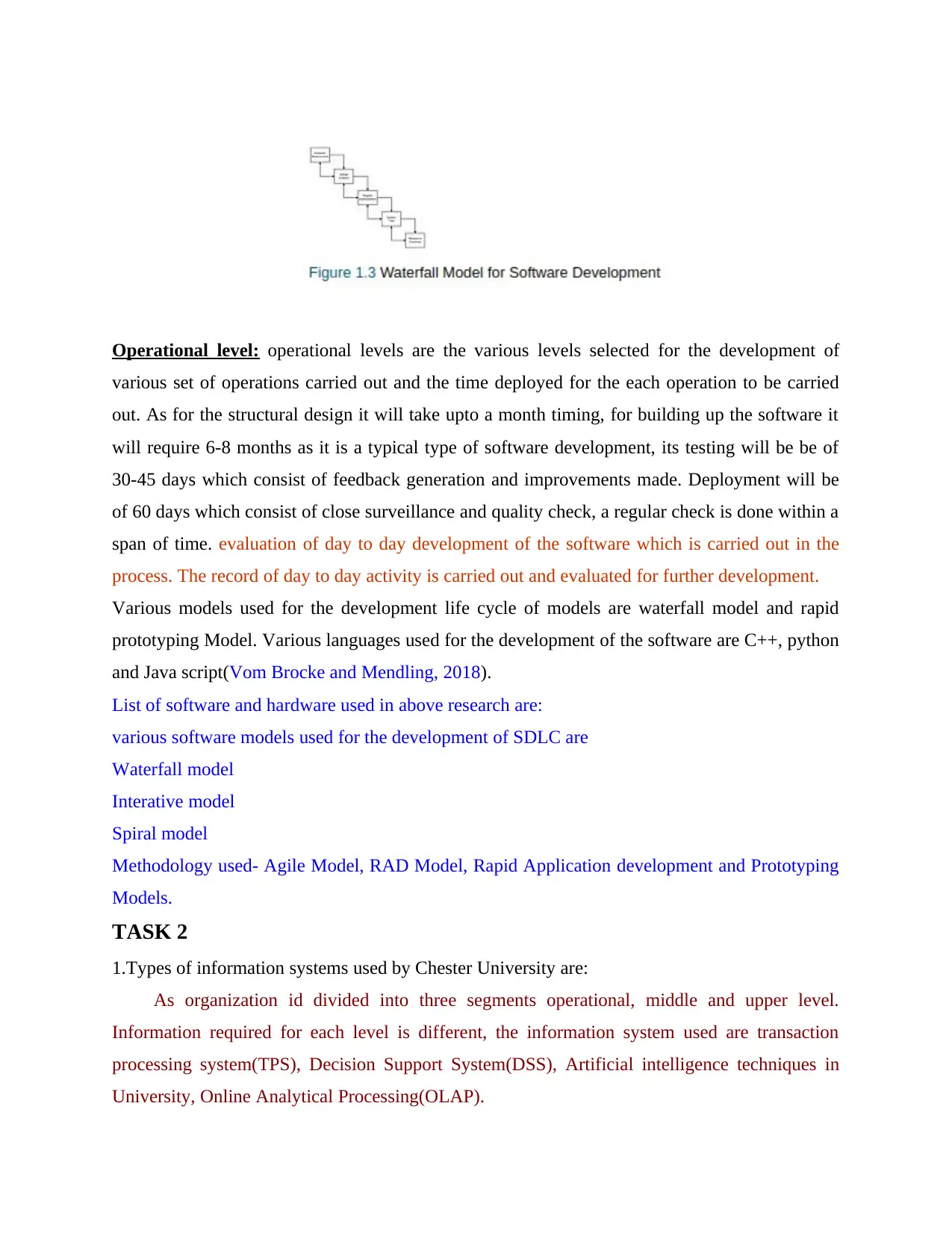
Operational level: operational levels are the various levels selected for the development of
various set of operations carried out and the time deployed for the each operation to be carried
out. As for the structural design it will take upto a month timing, for building up the software it
will require 6-8 months as it is a typical type of software development, its testing will be be of
30-45 days which consist of feedback generation and improvements made. Deployment will be
of 60 days which consist of close surveillance and quality check, a regular check is done within a
span of time. evaluation of day to day development of the software which is carried out in the
process. The record of day to day activity is carried out and evaluated for further development.
Various models used for the development life cycle of models are waterfall model and rapid
prototyping Model. Various languages used for the development of the software are C++, python
and Java script(Vom Brocke and Mendling, 2018).
List of software and hardware used in above research are:
various software models used for the development of SDLC are
Waterfall model
Interative model
Spiral model
Methodology used- Agile Model, RAD Model, Rapid Application development and Prototyping
Models.
TASK 2
1.Types of information systems used by Chester University are:
As organization id divided into three segments operational, middle and upper level.
Information required for each level is different, the information system used are transaction
processing system(TPS), Decision Support System(DSS), Artificial intelligence techniques in
University, Online Analytical Processing(OLAP).
various set of operations carried out and the time deployed for the each operation to be carried
out. As for the structural design it will take upto a month timing, for building up the software it
will require 6-8 months as it is a typical type of software development, its testing will be be of
30-45 days which consist of feedback generation and improvements made. Deployment will be
of 60 days which consist of close surveillance and quality check, a regular check is done within a
span of time. evaluation of day to day development of the software which is carried out in the
process. The record of day to day activity is carried out and evaluated for further development.
Various models used for the development life cycle of models are waterfall model and rapid
prototyping Model. Various languages used for the development of the software are C++, python
and Java script(Vom Brocke and Mendling, 2018).
List of software and hardware used in above research are:
various software models used for the development of SDLC are
Waterfall model
Interative model
Spiral model
Methodology used- Agile Model, RAD Model, Rapid Application development and Prototyping
Models.
TASK 2
1.Types of information systems used by Chester University are:
As organization id divided into three segments operational, middle and upper level.
Information required for each level is different, the information system used are transaction
processing system(TPS), Decision Support System(DSS), Artificial intelligence techniques in
University, Online Analytical Processing(OLAP).
Paraphrase This Document
Need a fresh take? Get an instant paraphrase of this document with our AI Paraphraser
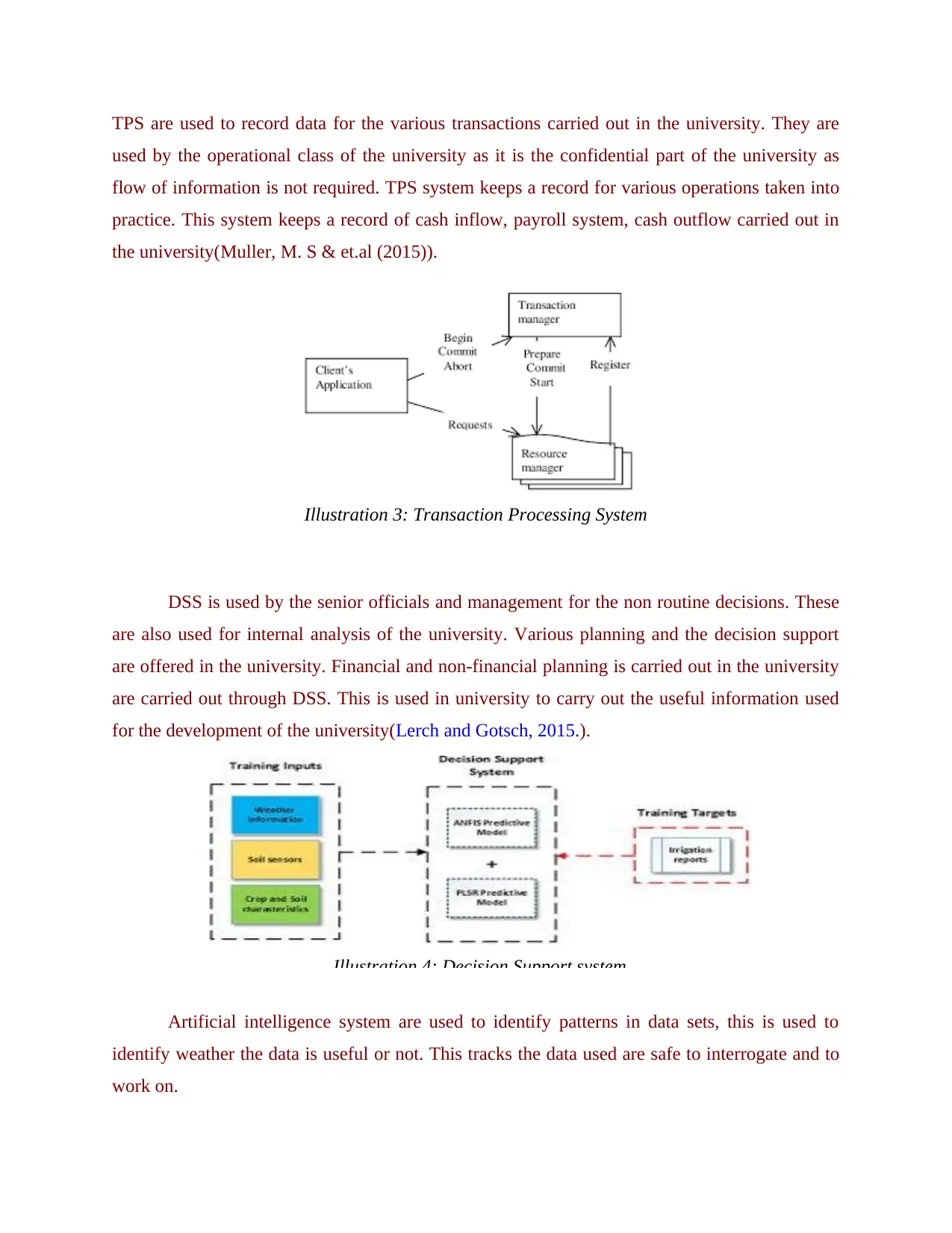
TPS are used to record data for the various transactions carried out in the university. They are
used by the operational class of the university as it is the confidential part of the university as
flow of information is not required. TPS system keeps a record for various operations taken into
practice. This system keeps a record of cash inflow, payroll system, cash outflow carried out in
the university(Muller, M. S & et.al (2015)).
DSS is used by the senior officials and management for the non routine decisions. These
are also used for internal analysis of the university. Various planning and the decision support
are offered in the university. Financial and non-financial planning is carried out in the university
are carried out through DSS. This is used in university to carry out the useful information used
for the development of the university(Lerch and Gotsch, 2015.).
Artificial intelligence system are used to identify patterns in data sets, this is used to
identify weather the data is useful or not. This tracks the data used are safe to interrogate and to
work on.
Illustration 4: Decision Support system
Illustration 3: Transaction Processing System
used by the operational class of the university as it is the confidential part of the university as
flow of information is not required. TPS system keeps a record for various operations taken into
practice. This system keeps a record of cash inflow, payroll system, cash outflow carried out in
the university(Muller, M. S & et.al (2015)).
DSS is used by the senior officials and management for the non routine decisions. These
are also used for internal analysis of the university. Various planning and the decision support
are offered in the university. Financial and non-financial planning is carried out in the university
are carried out through DSS. This is used in university to carry out the useful information used
for the development of the university(Lerch and Gotsch, 2015.).
Artificial intelligence system are used to identify patterns in data sets, this is used to
identify weather the data is useful or not. This tracks the data used are safe to interrogate and to
work on.
Illustration 4: Decision Support system
Illustration 3: Transaction Processing System
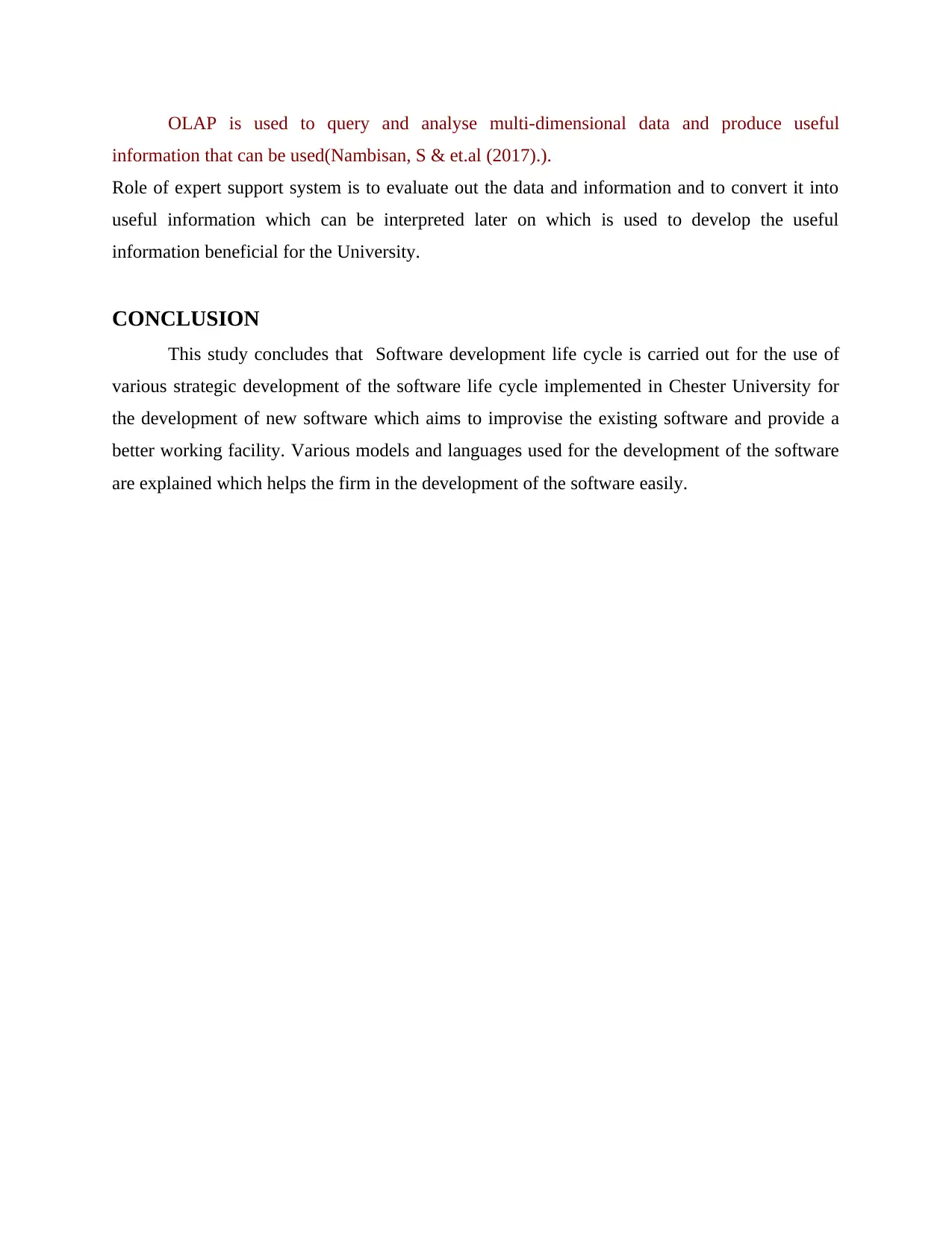
OLAP is used to query and analyse multi-dimensional data and produce useful
information that can be used(Nambisan, S & et.al (2017).).
Role of expert support system is to evaluate out the data and information and to convert it into
useful information which can be interpreted later on which is used to develop the useful
information beneficial for the University.
CONCLUSION
This study concludes that Software development life cycle is carried out for the use of
various strategic development of the software life cycle implemented in Chester University for
the development of new software which aims to improvise the existing software and provide a
better working facility. Various models and languages used for the development of the software
are explained which helps the firm in the development of the software easily.
information that can be used(Nambisan, S & et.al (2017).).
Role of expert support system is to evaluate out the data and information and to convert it into
useful information which can be interpreted later on which is used to develop the useful
information beneficial for the University.
CONCLUSION
This study concludes that Software development life cycle is carried out for the use of
various strategic development of the software life cycle implemented in Chester University for
the development of new software which aims to improvise the existing software and provide a
better working facility. Various models and languages used for the development of the software
are explained which helps the firm in the development of the software easily.
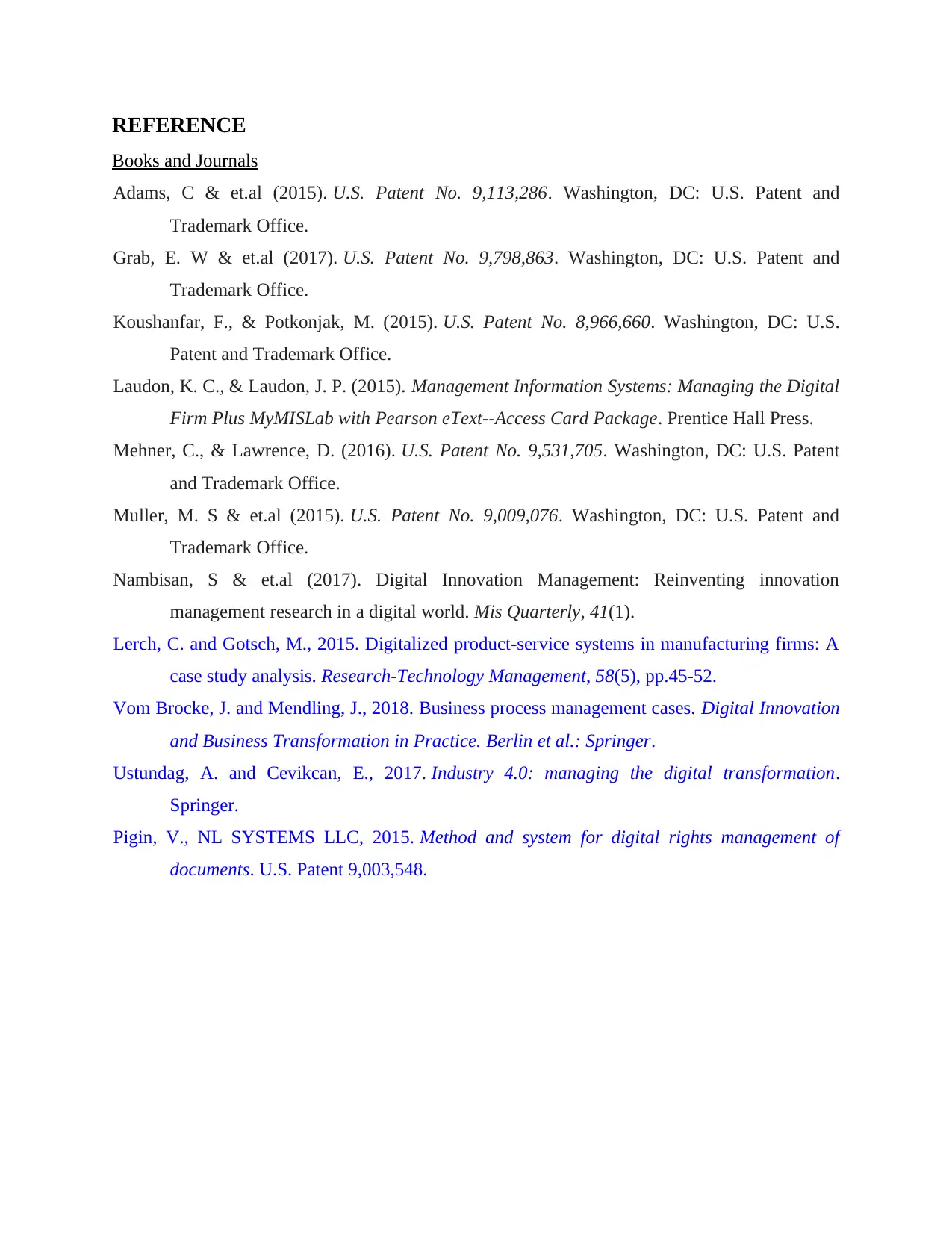
REFERENCE
Books and Journals
Adams, C & et.al (2015). U.S. Patent No. 9,113,286. Washington, DC: U.S. Patent and
Trademark Office.
Grab, E. W & et.al (2017). U.S. Patent No. 9,798,863. Washington, DC: U.S. Patent and
Trademark Office.
Koushanfar, F., & Potkonjak, M. (2015). U.S. Patent No. 8,966,660. Washington, DC: U.S.
Patent and Trademark Office.
Laudon, K. C., & Laudon, J. P. (2015). Management Information Systems: Managing the Digital
Firm Plus MyMISLab with Pearson eText--Access Card Package. Prentice Hall Press.
Mehner, C., & Lawrence, D. (2016). U.S. Patent No. 9,531,705. Washington, DC: U.S. Patent
and Trademark Office.
Muller, M. S & et.al (2015). U.S. Patent No. 9,009,076. Washington, DC: U.S. Patent and
Trademark Office.
Nambisan, S & et.al (2017). Digital Innovation Management: Reinventing innovation
management research in a digital world. Mis Quarterly, 41(1).
Lerch, C. and Gotsch, M., 2015. Digitalized product-service systems in manufacturing firms: A
case study analysis. Research-Technology Management, 58(5), pp.45-52.
Vom Brocke, J. and Mendling, J., 2018. Business process management cases. Digital Innovation
and Business Transformation in Practice. Berlin et al.: Springer.
Ustundag, A. and Cevikcan, E., 2017. Industry 4.0: managing the digital transformation.
Springer.
Pigin, V., NL SYSTEMS LLC, 2015. Method and system for digital rights management of
documents. U.S. Patent 9,003,548.
Books and Journals
Adams, C & et.al (2015). U.S. Patent No. 9,113,286. Washington, DC: U.S. Patent and
Trademark Office.
Grab, E. W & et.al (2017). U.S. Patent No. 9,798,863. Washington, DC: U.S. Patent and
Trademark Office.
Koushanfar, F., & Potkonjak, M. (2015). U.S. Patent No. 8,966,660. Washington, DC: U.S.
Patent and Trademark Office.
Laudon, K. C., & Laudon, J. P. (2015). Management Information Systems: Managing the Digital
Firm Plus MyMISLab with Pearson eText--Access Card Package. Prentice Hall Press.
Mehner, C., & Lawrence, D. (2016). U.S. Patent No. 9,531,705. Washington, DC: U.S. Patent
and Trademark Office.
Muller, M. S & et.al (2015). U.S. Patent No. 9,009,076. Washington, DC: U.S. Patent and
Trademark Office.
Nambisan, S & et.al (2017). Digital Innovation Management: Reinventing innovation
management research in a digital world. Mis Quarterly, 41(1).
Lerch, C. and Gotsch, M., 2015. Digitalized product-service systems in manufacturing firms: A
case study analysis. Research-Technology Management, 58(5), pp.45-52.
Vom Brocke, J. and Mendling, J., 2018. Business process management cases. Digital Innovation
and Business Transformation in Practice. Berlin et al.: Springer.
Ustundag, A. and Cevikcan, E., 2017. Industry 4.0: managing the digital transformation.
Springer.
Pigin, V., NL SYSTEMS LLC, 2015. Method and system for digital rights management of
documents. U.S. Patent 9,003,548.
1 out of 10
Related Documents
Your All-in-One AI-Powered Toolkit for Academic Success.
+13062052269
info@desklib.com
Available 24*7 on WhatsApp / Email
![[object Object]](/_next/static/media/star-bottom.7253800d.svg)
Unlock your academic potential
© 2024 | Zucol Services PVT LTD | All rights reserved.





